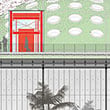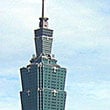Energy Efficiency
Energy Efficiency
Energy efficiency is a commendable goal. But what does it really mean to be green?
That question is answered in scrupulous detail by the U.S. Green Building Council’s LEED rating system, which stands for Leadership in Energy and Environmental Design. LEED ratings provide builders with “a framework for identifying and implementing practical and measurable green building design, construction, operations and maintenance solutions.”
LEED-certified buildings are rated for energy efficiency in categories including Sustainable Sites, Water Efficiency, Energy and Atmosphere, Materials and Resources, and Indoor Environmental Quality. They are designed to be more sustainable, have lower operating costs, reduce waste sent to landfills, conserve energy and water, and be healthier and safer for occupants.
A non-profit building industry coalition based in Washington, D.C., the U.S. Green Building Council also trains and accredits architects and other building industry professionals in green building practices.





